Where there’s life, there’s death. Though a true statement, for some it seems that life and legacy continue on long after death. Many artists, poets, writers, and others have been able to continue to live on through their stories, theories, art, and ideas. Though not immortal, the works of certain people allow them to continue to be an important part of the world, despite no longer living.
The list below describes ten people, who after death, became famous and made a profound impact on society as well as culture that can still be felt today. Not all of these people wanted fame, but ultimately achieved it, just in an untimely manner. I guess posthumous fame isn’t all that bad.
10. El Greco
Doménikos Theotokópoulos, better known as El Greco due to his Greek background, was a painter, architect, and sculptor during the Spanish Renaissance who was born in 1541. He also studied the Classics and created his own library of 130 books. He moved to Rome in 1570 and opened a workshop in hopes of allowing his artistic career to flourish and lived within the artistic community. He eventually moved to Venice and began painting religious subjects, often focusing on elongated features and figures. He did this in hopes of leaving his own mark in history, using a new and original style for himself. El Greco continued to travel and create, but soon lost his place in society after lacking the king’s favor. In 1614 he died after falling ill.
The death effect
During his time, El Greco’s work was ignored, pushed to the side, and often criticized, simply because it was different. His expressionistic and dramatic style was not what people were used to, and his paintings were not appreciated much at all. In fact, many during his time called his work “ridiculous” and “worthy of scorn.” Even after his death, he was also scorned, as many saw his work as being too confusing and incomprehensible. However, when the 20th century came, his work was, and still is, highly appreciated. He is seen as a painter who was ahead of his time, using modern techniques as well as those from the contemporary realm. In essence, many don’t believe he fits into just one school of art; instead he seemed to create his own.
9. Alfred Wegener
Born on November 1, 1880, Alfred Wegener dedicated his life to being a prolific German scientist, geologist, and meteorologist. In 1905, he received his astronomy degree from the University of Berlin and then set out on a life of discovery and experimentation. He went on expeditions to Greenland in order to study the polar air circulation, which was done before there was ever a widely accepted existence of the Earth’s jet stream. Wegener, during his life, also focused his research heavily on continental drift, in which he believed the continents were very slowly moving around the earth. But, despite research and information that backed his theory, which was correct at the time, it was not accepted until later on in the 1950s. He died in 1931 on a trip to Greenland due to heart failure.
The death effect
Though he made his theories known during his lifetime, not many people believed him, and they often went on with their own experiments, disregarding Wegener’s findings. While he did discover the jet stream, continental drift, and the fact that the continents are connected, he was never credited with these ideas until there was concrete evidence proposed and accepted. After his death, J. Tuzo Wilson provided substantial evidence to prove the existence of tectonic plates and continental drift. Once proven, Wegener’s theories were brought to the forefront.
8. Galileo Galilei
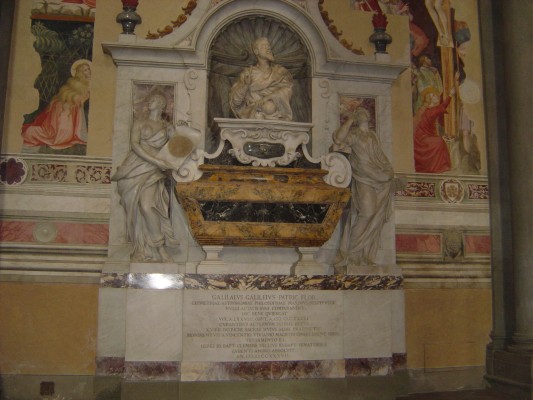
Galileo Galilei was born on February 15, 1564 was a scientist, mathematician, and astronomer who contributed valuable information and astrological tools to the scientific world. He created a telescope that allowed him to look at the planets, including Jupiter and Saturn, in which he was able to discover the moons orbiting these planets. Though he didn’t discover the theory himself, he proved that Copernicus was correct in his heliocentric theory of our solar system. He was also one of the first to discover sunspots, moon craters, and even lunar mountains. While his discoveries and theories were correct, he was often criticized by those heavily involved in religion, which was a way of life during his time, as they believed that the world was geocentric and was in one fixated place and did not move to revolve around the sun. He was accused of heresy by Pope Urban VIII and was put on house arrest until his death.
The death effect
While Galileo did make himself known, his theories were hardly accepted during his lifetime. During his lifetime, there was still a strong focus on incorrect religious beliefs. People didn’t want to think outside of the Bible, and therefore anything that contradicted what the Bible claimed was ultimately thrown out and entirely disregarded. However; today, Galileo stands as the father of modern physics and his work is highly praised. Even though he didn’t know it, Galileo was studying and experimenting with scientific ideas that today are considered highly important parts of the scientific world, including kinematics and strength of materials.
7. Gregor Johann Mendel
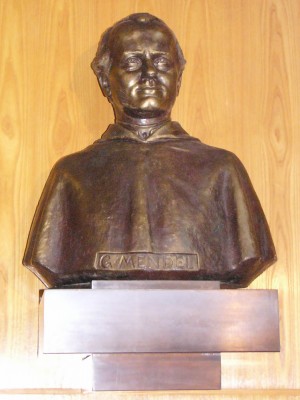
Born in 1822, Gregor Johann Mendel was an Augustinian priest, who today is known as the “father of modern genetics.” Even though his experiments didn’t seem of much value during his time, little did people know that he had experimented with genetic inheritance by examining pea plants. Despite the fact that he was extremely shy and quiet and often had psychological breakdowns, he was heavily devoted to plant hybridization, botany, meteorology, and learning more about natural science. One of his most famous experiments involved him cross-breeding two different types of pea plants. His experiments brought forth two generalizations, the Law of Segregation and the Law of Independent Assortment, which later became known as Mendel’s Laws of Inheritance. In 1884 Mendel died, but thankfully his discoveries did not.
The death effect
While he had made very significant findings, such as the fact that trait inheritance follows certain laws, Mendel’s theories and data were not recognized, used, and praised until the 20th century. Many disregarded his theories and information due to the fact that they just didn’t understand it. He was rediscovered in the 1900s and biologists over flocked to test out his experiments. Today, Mendel has two laws named after him, both dealing with genetics. One explains dominant and recessive genes, which he discovered after mixing a white and purple pea plant, and the product producing only purple flowers, and the other explains how alleles of different genes all assort independent of other alleles.
6. Henry Darger
Darger, a reclusive writer and artist, was born in 1892 and lived a very troubled life from early on, but used his experiences and life journey to create amazing art and literature. His mother died when he was four, and his father passed away soon after, and he was left to live at a Catholic mission home, where he was disciplined for making strange noises, which were said to be possibly caused by ADHD or Tourette Syndrome. In 1930, Darger moved into a second-floor room on Chicago’s North Side, in the Lincoln Park section of the city. It was in this room, more than four decades later, after his death in 1973, that Darger’s extraordinary secret life was discovered.
The death effect
Today, he is best known for being an artist whose work was portrayed as “outsider art,” meaning those who have little contact with society or those who never received any type of formal art or writing lessons. One of his most widely known pieces of literature is The Story of the Vivian Girls, in What is known as the Realms of the Unreal, of the Glandeco-Angelinnian War Storm, Caused by the Child Slave Rebellion, along with several hundred drawings and watercolor paintings illustrating the story. The long name goes along with the length of the book, ending at 15,145 pages. Darger is also known for his watercolor paintings that illustrate the entire story.
Today, his work commands upward of $80,000 and his room has been re-created at a new permanent exhibition at Intuit: The Center for Intuitive and Outsider Art, a gallery in Chicago.
5. Henry David Thoreau
“The country knows not yet, or in the least part, how great a son it has lost”
Best known for his books Walden and Hoosiers, Henry David Thoreau was born on July 12, 1817 and was able to truly emphasize the importance of natural living and being one with nature and the natural world. He is also well known for fighting for resistance against unfair laws and from morally unjust governments. Known as the individualist anarchist of asceticism, Thoreau was one of a kind, especially when it came to his writing, creating stanzas filled with symbolism and hidden meanings. He could not even find a publisher for his book, A Week on the Concord and Merrimack Rivers, and instead printed 1,000 copies at his own expense, though fewer than 300 were sold. Today, his literature has inspired many leaders, such as Ghandi and Leo Tolstoy. After studying and teaching, Thoreau wanted to do natural experimentation. To experience simple living, Thoreau built and moved into a small shack on land owned by his friend Ralph Waldo Emerson. Here he claimed to become one with the earth.
The death effect
By the time of his death, Thoreau had only published two books, which were seen as obscure and weird by many, though he did have a few admirers, most notably Ralph Waldo Emerson. Before he died, Thoreau had boasted of his library, filled with about 900 books, but seemed to pick at the fact that 700 of them were his own. He paid for the publishing of his A Week on the Concord and Merrimack Rivers out of his own pocket, and didn’t make much profit from them. Not until the late 1920s did Thoreau get the praise he deserved. Today, Thoreau is regarded as one of the most important American writers, both for the clarity of his style and for his views on nature and politics. His memory is honored by the international Thoreau Society.
4. Edgar Allan Poe
Born on January 19, 1809 in Massachusetts, Edgar Allan Poe flew under the radar his entire life. He is known as an American Romantic Movement writer who often focused on macabre, mystery, and is the first to write a detective-fiction short story. He had hoped to be become a successful writer and make a living by doing so, but his life went otherwise. He went to college for a short period of time and he even tried a military career which did not work out, so he then decided to leave his adopted family and start anew. He soon became interested in writing and publishing, doing both anonymously. While Poe was able to publish his prose as well as short stories, he wasn’t usually paid for them, and if he was, it was just a few dollars. His piece, The Raven sold for $9, which is a highly praised work of literature today. After his wife’s premature death, his life seemed to go downhill. He was moving from place to place to in order to keep publishing his work and attempting to stay out of legal trouble due to excessive drinking. However, in 1849, Poe died of what doctors say to be a combination of many possible things, ranging from suicide, to rabies, to heart disease.
The death effect
While Poe’s work was published, he never made much money, and never received the fame he has today. All over the world his work is celebrated for introducing a new type of writing style and theme into the literature world. Many are extremely fascinated by his death; others like to delve into his literature to see just what may have caused him to live such a short and seemingly unhappy life.
Sir Arthur Conan Doyle said, “Each [of Poe’s detective stories] is a root from which a whole literature has developed…. Where was the detective story until Poe breathed the breath of life into it?” High praise from someone who many feel is the most important detective novelist of all time.
3. Emily Dickinson
Emily Dickinson’s poetry is some of the best written by a female in the English language. She has become widely acknowledged as an innovative, pre-modernist poet. Born on December 10, 1830, Dickinson lived the life of a recluse, due to the fact that she was extremely shy and introverted. She was seen as eccentric in her Massachusetts town, which made her even more isolated from the town commoners. Many believe a love affair she had sparked some sort of psychotic episode, which then focused her writing style on being highly personal and related to her own life events. During the 1880s, many of Dickinson’s family members began to die one after the other, and she soon after died as well in 1886 from Bright’s disease.
The death effect
Before she died, only seven of Emily Dickinson’s poems were published publicly. The poems that were published were highly edited so that they fit the proper rules of poetry at the time. It is speculated she wrote over 1800 poems, most of which she wanted to keep hidden and away from the public eye. She was known for writing about immortality and death, and her other themes, including nature, also came to light when her poems were published. Despite her desire to keep her poetry as her own and wishing for her sister to burn them after her death, Lavinia and two friends edited and then published her work. In 1890 a collection of her poems were published.
Dickinson is taught in literature and poetry classes from middle school to college. Her poetry is frequently anthologized and used by many artists today. An 8-cent commemorative stamp in honor of Dickinson was issued by the United States Postal Service on August 28, 1971.
2. Franz Kafka
Born on July 3, 1883 in Prague, Franz Kafka was part of a middle-class Jewish family. He was the eldest of all of the children and was put under most pressure to help his family by his father. After attending school at the Charles-Ferdinand University of Prague, he studied chemistry, then switched to law, and became extremely interested in writing and other literary elements. Though he found quality jobs, he quit them often due to conflicts with the time. Kafka wanted more time to himself in order to write, and later in life moved to Berlin in 1921 in order to get this time. But, in 1924 he died suddenly, apparently from starvation, due to the fact that he was suffering from tuberculosis and was no longer able to eat.
The death effect
“Dearest Max, my last request: Everything I leave behind me … in the way of diaries, manuscripts, letters, sketches, and so on, [is] to be burned unread.”
While alive, Kafka only published a few pieces of his unfinished works. His writing didn’t get much attention until after he died, and that is when many began to discover his style of writing, which was highly existential and modern, and often reflected his own life in a dry, humorous way. Before dying, Kafka never really finished his works. The Metamorphosis stands as one piece of literature that was completed, but many see it as a short story, not a novel. His work wasn’t published until after he died, by a lifelong friend named Max Brod. Today, there is still a search for lost letters and manuscripts written by Kafka.
His fame lives on as Kafka has a museum dedicated to his work in Prague, Czech Republic. Possibly more notable is the fact that the term “Kafkaesque” is widely used today to describe bizarre concepts and ideas which are prevalent in his works, particularly The Trial and The Metamorphosis.
1. Vincent van Gogh
Born on March 30, 1853, Vincent van Gogh today stands as one of the most prolific and widely celebrated Dutch Post-Impressionist painter. He was a shy child with low self-esteem who at first did missionary work in order to become a priest, but later turned to drawing and painting, and then developed his artistic career during his 20s. While his paintings reflected the southern sun in France and often contained bright colors, his life was the complete opposite. He suffered from epilepsy and depression. Though mentally unstable, which ultimately lead to his suicide, van Gogh’s work is seen as some of the most influential and praised art ever created. After painting 900 pictures and about 1,100 drawings and sketches, his 2,000 pieces of art were never really discovered until after his death.
The death effect
Though having been a painter for decades, Vincent van Gogh didn’t become famous until the end of his life. He was so unknown that not many even knew of his death. Despite the fact he had painted large numbers of artwork, it only began to become popular around the late 1890s. His work started to spread from France and Belgium into Germany and the Netherlands with the help of his brother’s wife. Van Gogh’s fame peaked a little before WWI in Germany and Austria and was also popular in late 1918, as British and American collectors brought his paintings over. Today, van Gogh’s work is worth millions of dollars. His painting Portrait of Dr. Gachet sold for 82.5 million dollars in 1990 and is valued at 134 million today./div>

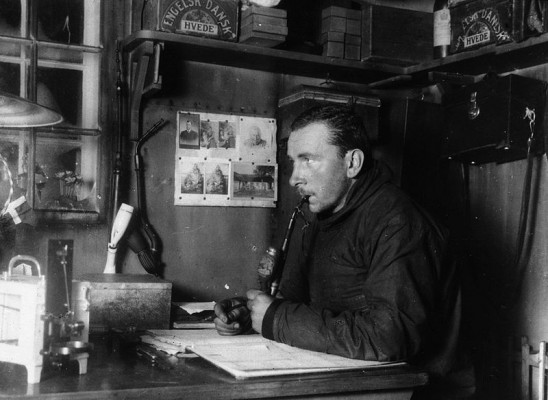
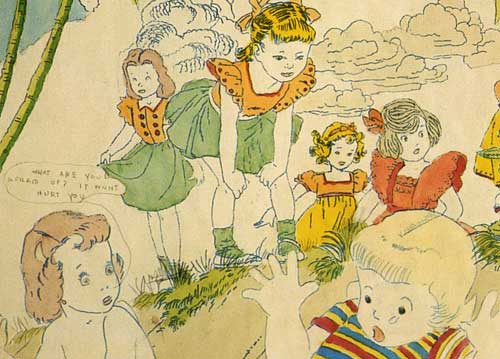
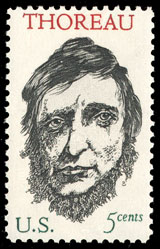
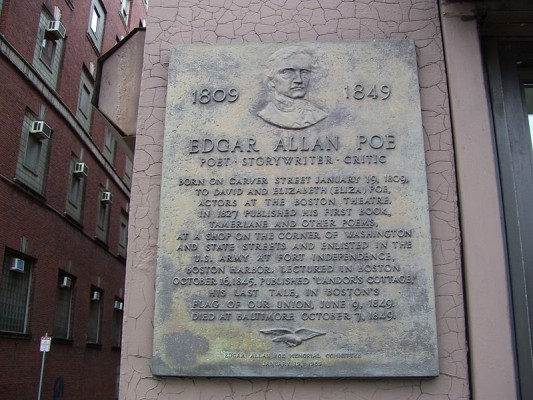

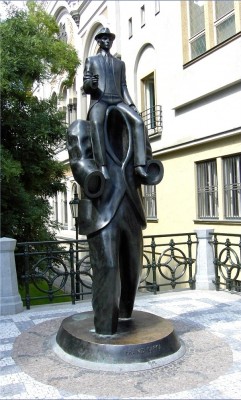
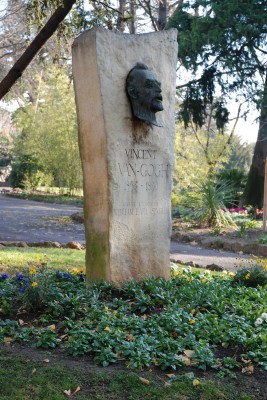
30 Comments
Hello everyone!
Just a quick question, Im currently starting my 3rd year of university. I’m about to start my dissertation does anyone know of any (specifically) photographers who became famous after death? I have a small list but need a few more people.
Many Thanks!!
You just tottaly forgot poor Anne Frank…. She deserver to be #1
I am thinking Helen Keller is an absolute perfect person to add to this list. If you don’t know who she is then its worth it to read about her. I love who she is and what she stands for. My fondest thought of her is in her silent dark voice I feel I can see and hear her light. She is an example to us All. No matter who we are we can be strengthened by her. May God bless us all in our positive endeavors.
Helen Keller was very famous during her lifetime, and she was added to the list of the most powerful women ever in 1965, three years before she died.
But… but…
Sylvia Plath.
Notable omission.. Anne Frank.
Anne Frank, victim of the Holocaust, most well-known for the diary she kept while in hiding which has since become one of the world’s most widely read books.
Great list, indeed. But with a considerable mistake: Galileo Galilei became internationally famous a long time before his death. Precisely in 1610 with the publication of the Sidereus Nuncius, regarded as a masterpiece by all European astronomers of the time.
How about Johann Sebastian Bach
Bach died in 1750 and his music was completely forgotten for decades until the great composer Felix Mendelssohn and his orchestra performed Bach’s B Minor Mass in the late 1820’s to an audience that was stunned and in disbelief as to how beautiful it was and as to who this Bach guy was. That began the resurrection of his music and today, many musical experts and historians regard him as the greatest composer whoever lived. From a mathematical standpoint, his music is perfect.
It’s a common misconception that Galileo’s theories were rejected because of religious beliefs. That is only partly true. The church was relying on the scientific consensus of the time when they rejected Galileo. That is, it wasn’t the church so much that rejected Galileo’s theories as it was his fellow scientists. Galileo wasn’t a very sociable person, and so the other scientists didn’t cut him any slack at all, probably because he was pretty constantly calling them idiots.
I went to an exposition of El Greco´s work once and we were told that one of the reasons El Greco´s style is so particular (elongated figures) is because he suffered of astigmatism, and such visual deviation made his perspective differ from reality, apart from his obvious desire to be remembered throughout History.
Nice list. Made me very sad in a way, that these people never knew the impact they would eventually have. How ’bout Nietzsche? I guess that one is how you look at it. He spent the last eleven years of his life in a catatonic state, aware of nothing and no one. But it was during that time that his fame came into being. While he was sane, only a few academic types had ever uttered a word about him. He got to see just the very beggining of his fame, the first little hint of it. Right before his breakdown, he found out a class on one of his recent works was being taught at some or other university, I forget where. Some rare professor that loved his ideas.
Even more tragic, because as far as I know he had absolutely no idea of his eventual fame, is the case of the great John Kennedy Toole. His novel A Confederacy of Dunces is a book I’d recommend to anyone. It’s hysterical, sad, thought-provoking, silly, philosophical, absurdist, and ultimately hopeful. Too bad Toole couldn’t have hung in there a bit longer. He killed himself after a bunch of rejections. His mom found the rejected novel and fought to have it published. His case breaks my heart when I think of it. He had so much more to offer, but he gave up. I hope on some level, somehow, he knows the joy he’s given people.
Anne Frank. Absolutely.
All these wonderful humans who give us so great delight. and richness. I can only think of One who, like Charles spurgeon, one would have on their grave stone,”Nothing in my hands I bring, simply to Thy cross I cling.”
I think that the reason for El Greco to paint in that particular way was he suffered of astigmatism, which caused him to see elongated figures, not necessarily for wanting to leave a unique style.
Karl Marx?
totally!
Karl Marx was well known during his lifetime itself.
What about Emmit Till?
What about Anne Frank
I agree…Anne Frank should certainly be on that list!
Jesus doesn't make the list, as he was quite well known during his life, so much so he was executed by the powers that be. How about Socrates? Absolutely NOTHING about his life, his biography, or anything like that. We only know about him through Plato and other students who wrote about him after he died.
Socrates would have been a good addition. Thanks Keith 🙂
Jesus wasn't really well known, there are no historical records for him, despite numerous other mentionings of other self-proclaimed messiahs and similar prophets/charlatans. The only thing that comes close doesn't reference his name, and is likely a forgery since it only appeared in the re-published editions after 1400 or whenever that dastardly spaniard re-published it..
Ummm… I think Galileo should have been higher on the list… like second or so.
Very interesting list. It really shows how, especially in the worlds of art and science, the visionaries and those who change the course of human thought are only truly recognized through the lens of history.
You missed one. Ever hear of Jesus? His death made him pretty famous.
Andrei – Good call. Hard to believe we overlooked Jesus.
Really much of the facts written and understood about Jesus is still contradicting… If we go my bible the list will go on from Moses to Muhammad… Lets confine it to people whose work is based on rational science and art!!!
Re: Poe
He was actually quite well-known by the general public, if constantly hard up for money. "The Raven" made him so. During the last part of his life, he often supported himself with public recitals of it.
He did, however, become POPULAR after death.